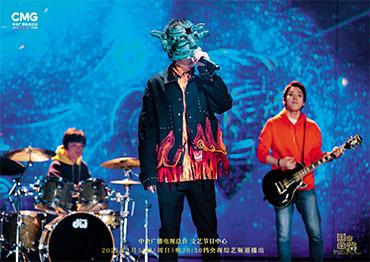Efforts to better engage the public in archaeology are not new in China. In 1949, archaeologist Xia Nai published a book chronicling his work at the now UNESCO-listed Mogao Caves in Dunhuang, Gansu Province.
However, the idea of “public archaeology” – a Western movement beginning in the 1970s that involves outreach programs – did not reach China until the 1990s.
At the time, there was debate over how to interpret “public.” Some argued it meant public relations, while others said it meant bringing archaeology to the masses.
A watershed moment came in 2009 with the excavation of the tomb of Cao Cao, the emperor-general of the Wei state during the turbulent Three Kingdoms Period (220- 280).
Henan Provincial Administration of Cultural Heritage announced it had identified Cao Cao’s tomb in Anyang County, supporting their claim with six points of evidence, including historical archives that placed him in the area around the time of his death. However, many were skeptical.
Yuan Jixi, a Chinese literature professor at the Renmin University of China in Beijing, argued the evidence was circumstantial and authorities had spoken too soon. Ma Weidu, a noted antiques appraiser, expressed his doubts over the authenticity of some of the physical evidence, including the stone steles at the site – important identifiers for ancient tombs. Ma’s comments drew substantial public attention, leading some to question the integrity of the dig and the motives behind the local government’s announcement.
Although local authorities stood by the claim, citing historical records and analysis, public doubt lingered for nearly a decade. Criticism died down in 2018 when Henan Provincial Institute of Cultural Heritage and Archaeology published reports on Cao Cao’s tomb and the National Cultural Heritage Administration announced that the excavation was conducted to national standards. A park and museum now stand at the site.
But the controversy shook the world of archaeology, where many were surprised at how professional archaeologists struggled to guide or influence public opinion about their field of expertise.
“Archaeologists realized that it was about time to face the public, or they would be stuck in a passive position,” Xi Muliang, a scholar at Peking University’s School of Archaeology and Museology, told NewsChina.
Archaeology has struggled with its public image in China since the 1990s, when many considered the field no more than “sanctioned grave robbery.” As Chinese cities launched massive infrastructure projects at that time, many local governments saw cultural relic protection and archaeological surveys as obstacles to their plans. The third National Cultural Relics Census conducted between 2007 and 2011 revealed that 44,000 registered immovable cultural relics had disappeared from their sites due to natural disasters, poor protection and theft. Also, 8.43 percent of those that remained were in “poor condition,” while 17.77 percent were in “relatively poor condition.”
Although archaeologists urgently needed to increase awareness of cultural relic protection, they had few available channels to address the growing crisis. “No matter how it was interpreted, public archaeology at the time had a very clear purpose: to prevent archaeology from being marginalized and stigmatized and cultural relics from being destroyed,” Xi said.

 Old Version
Old Version

